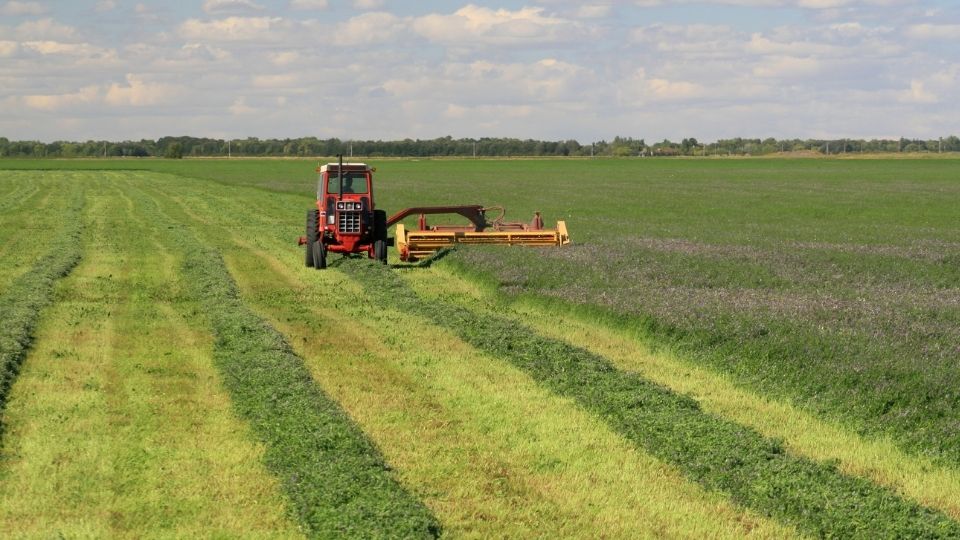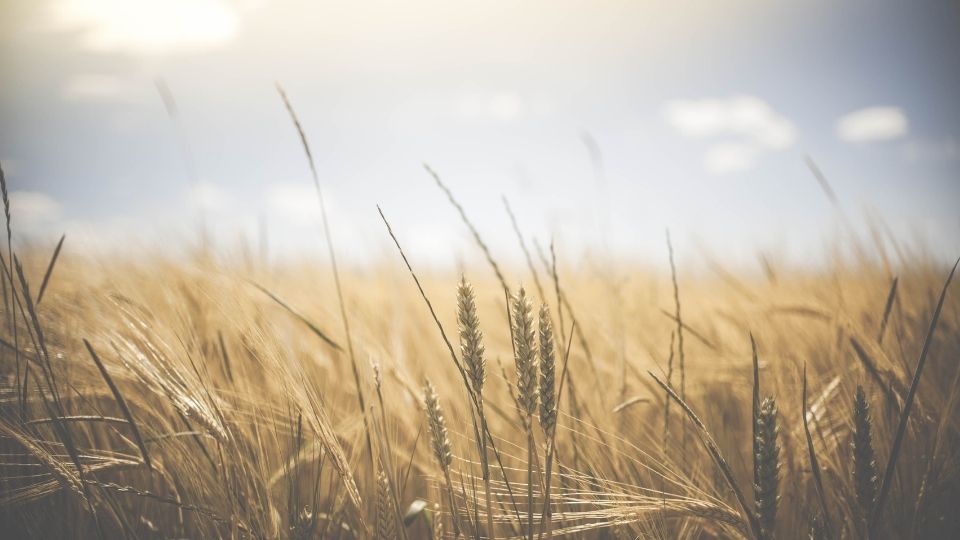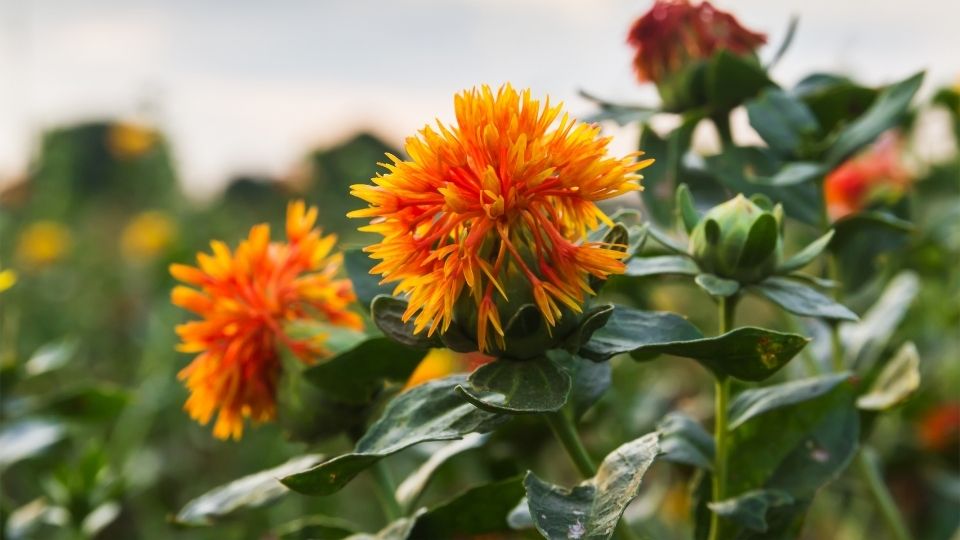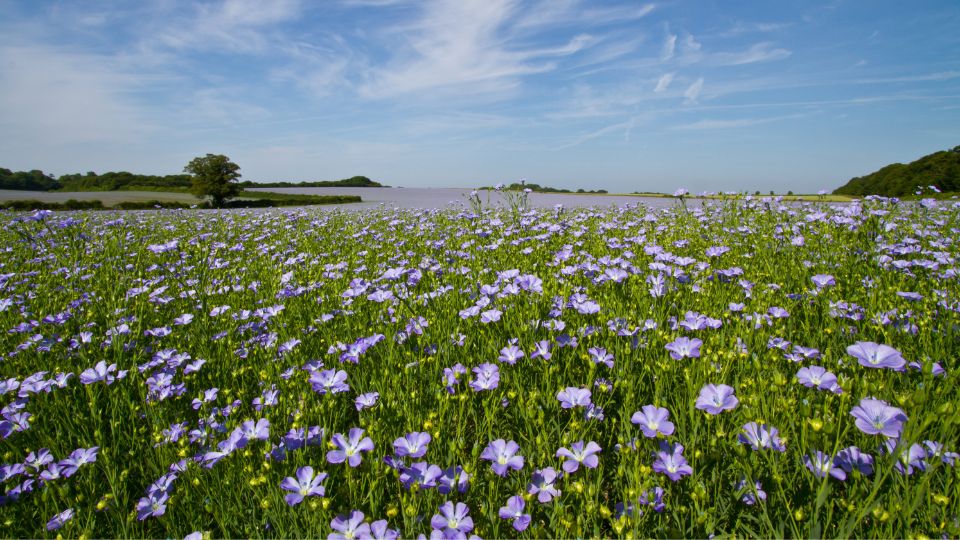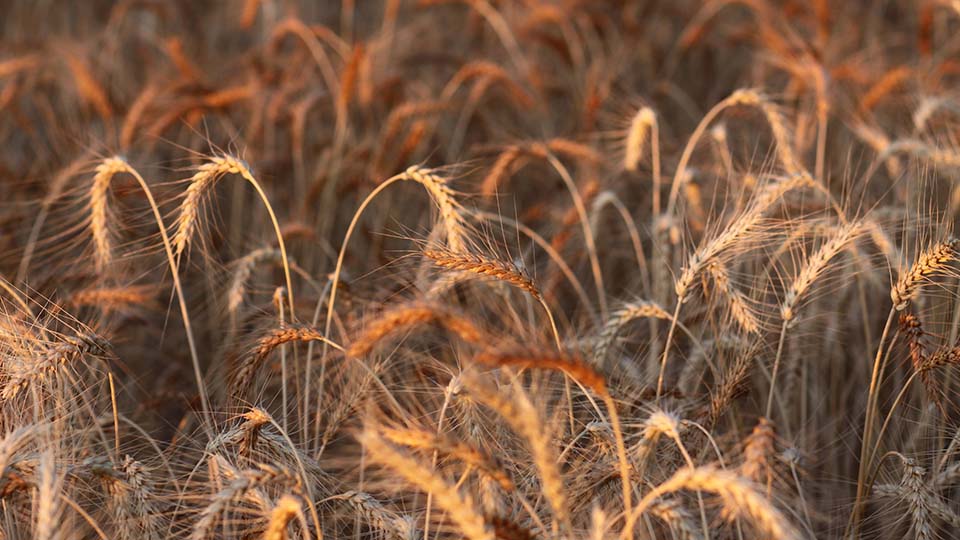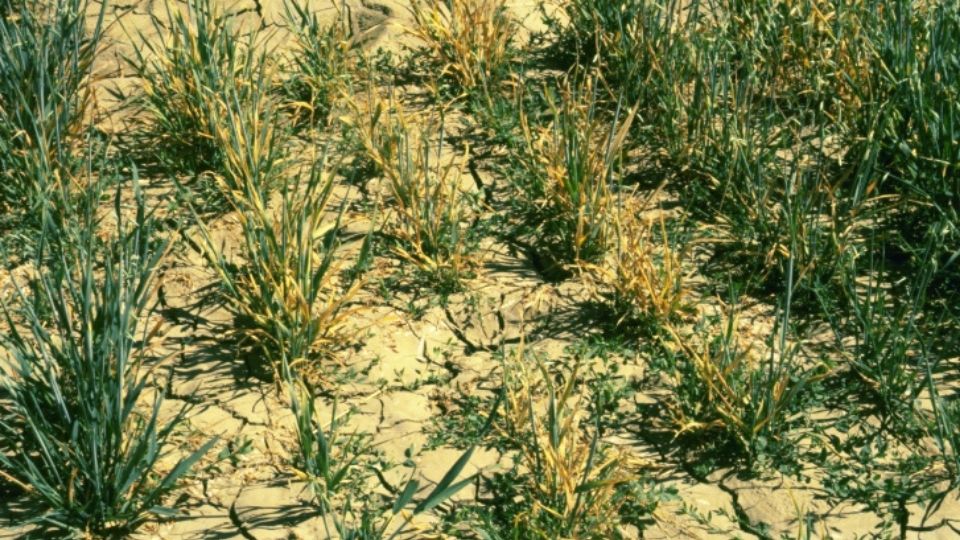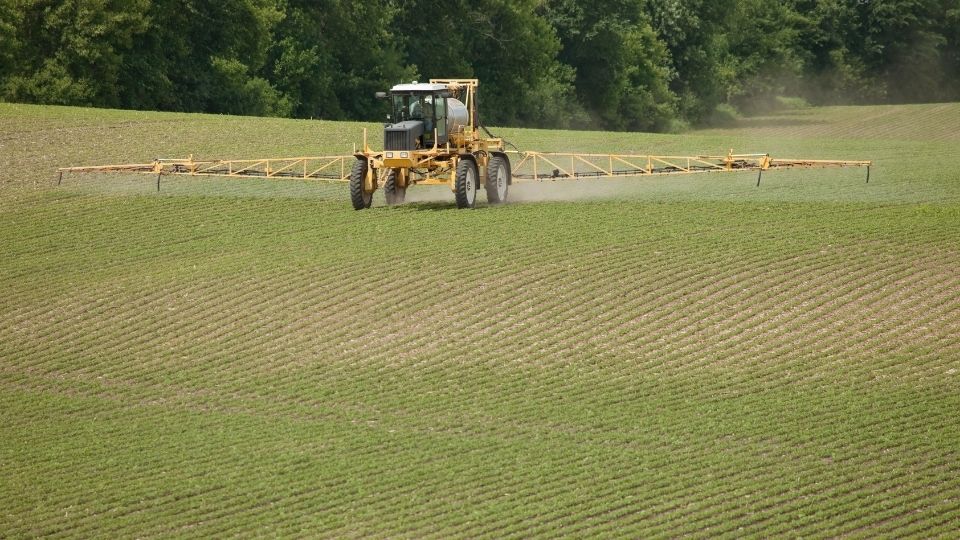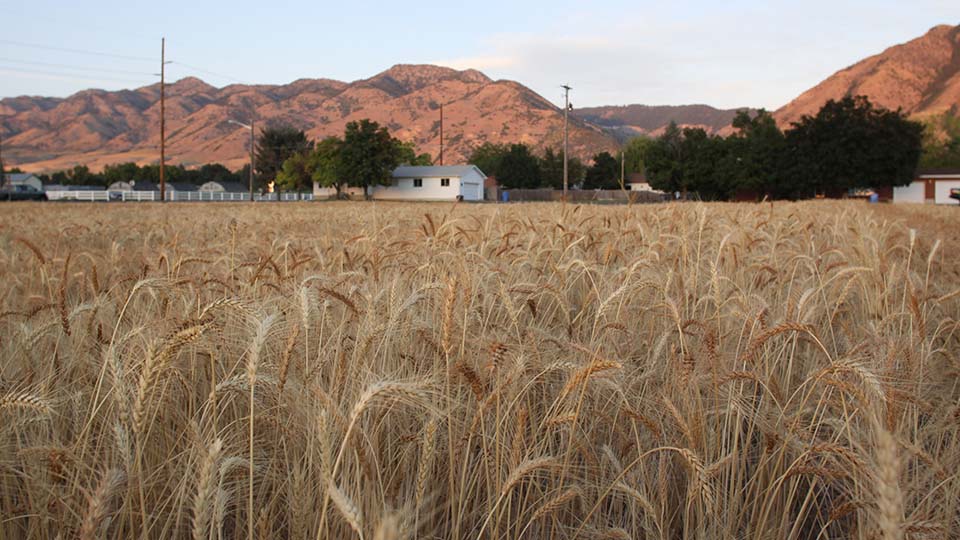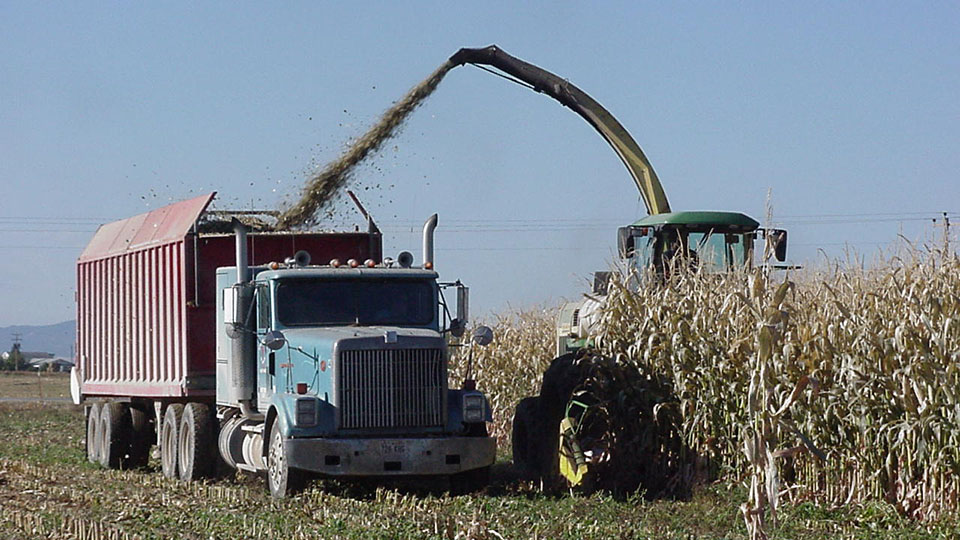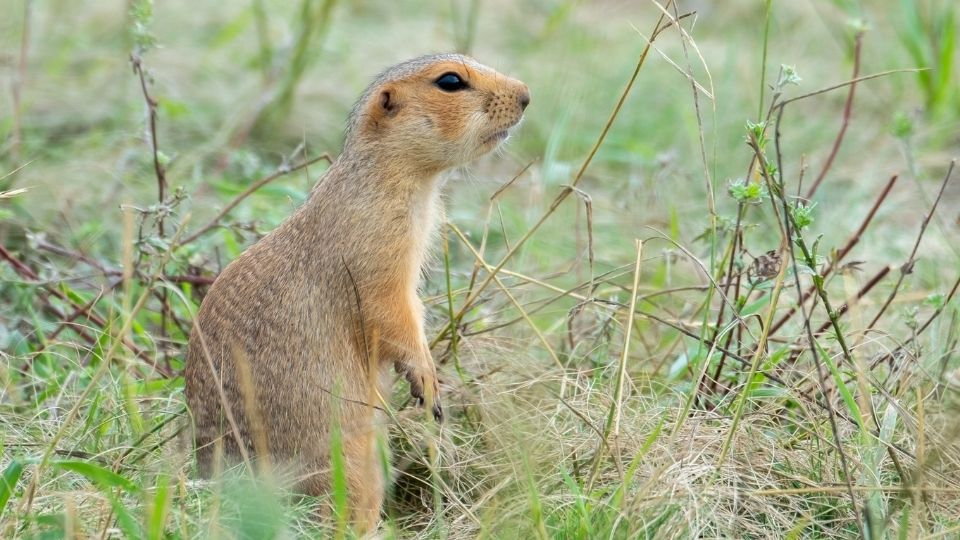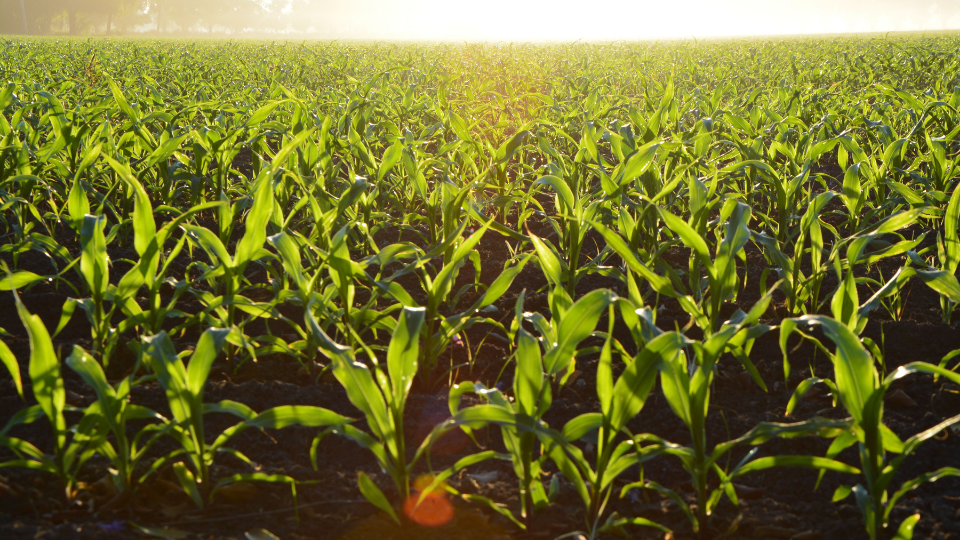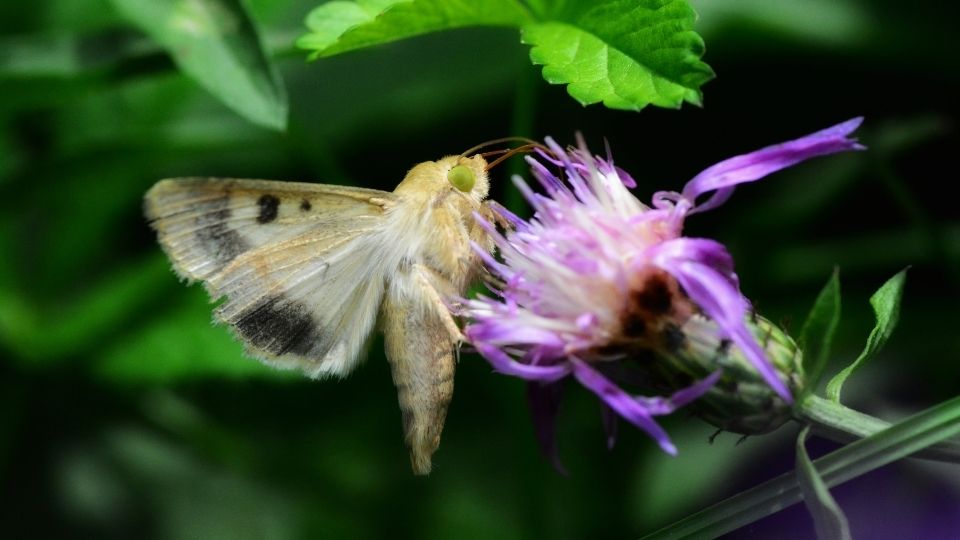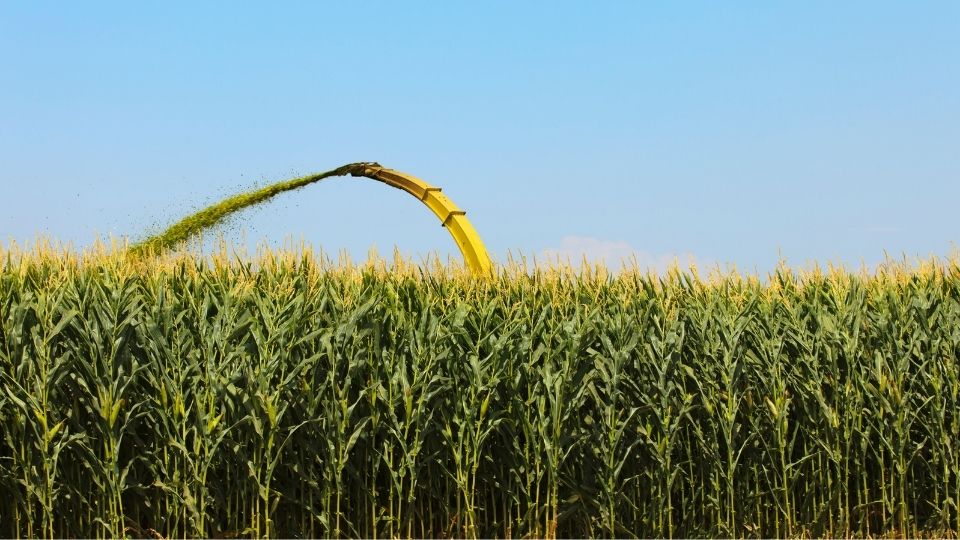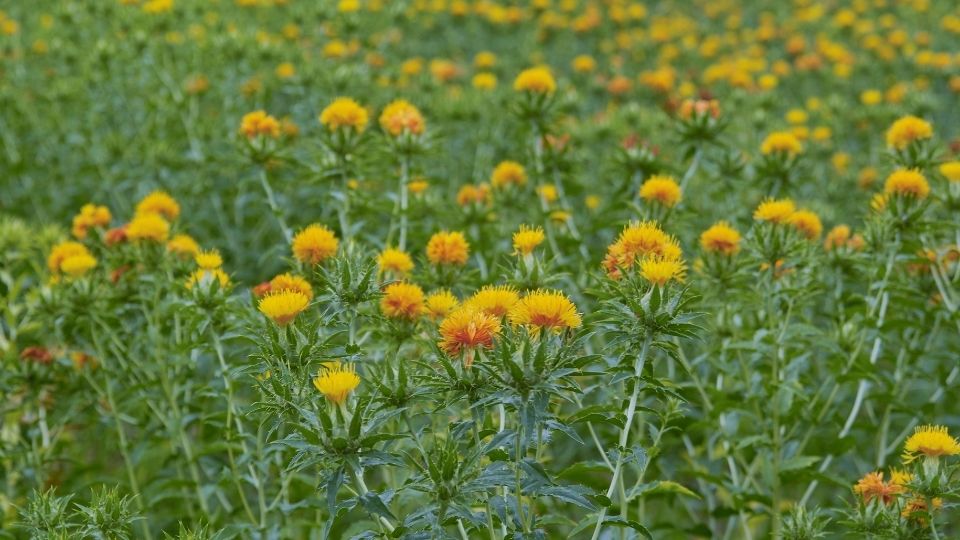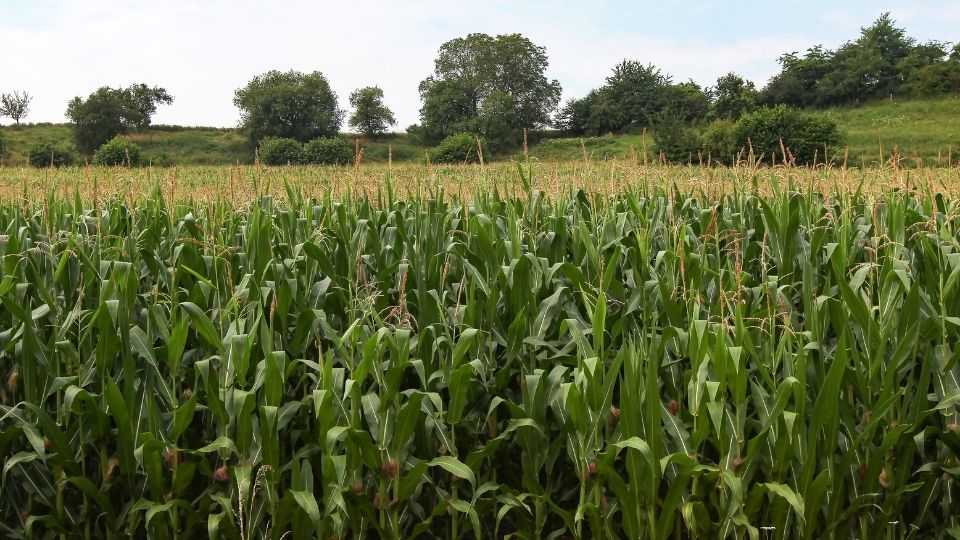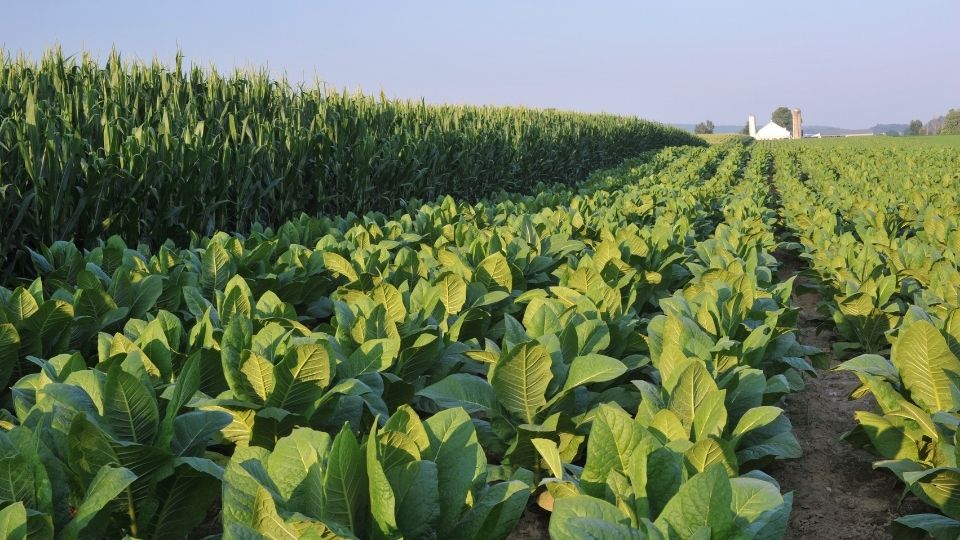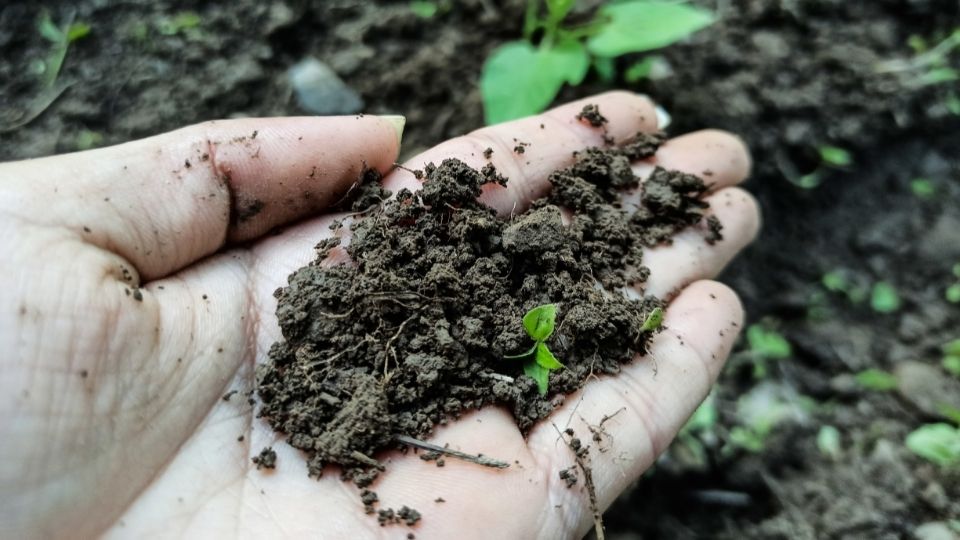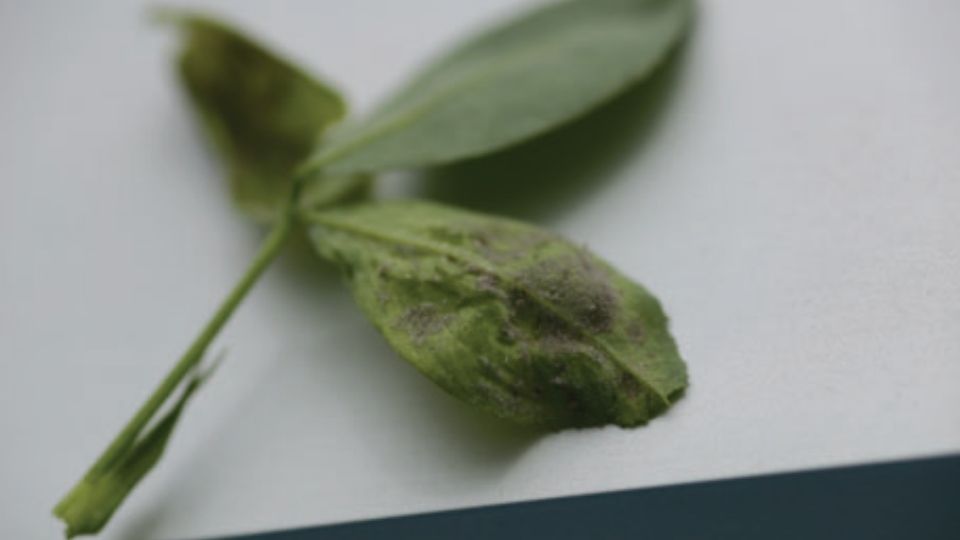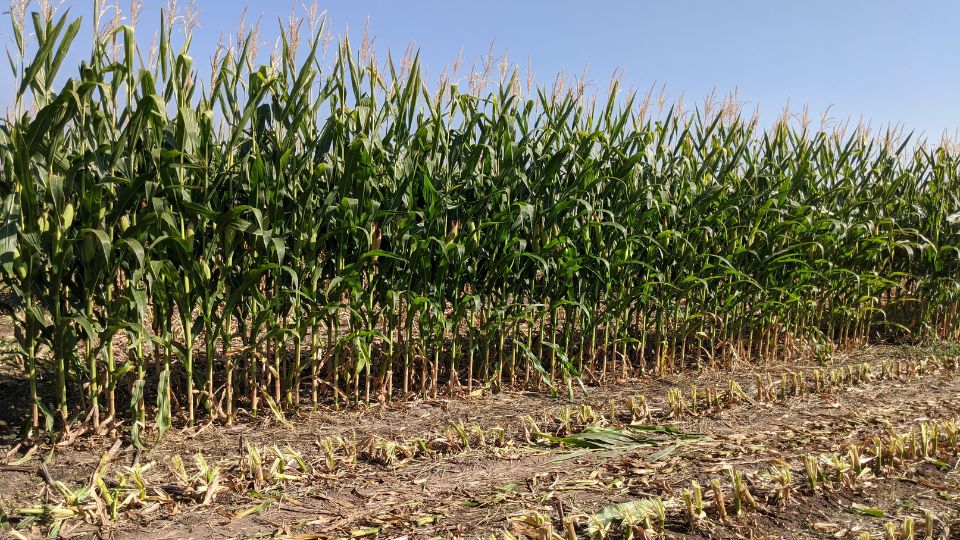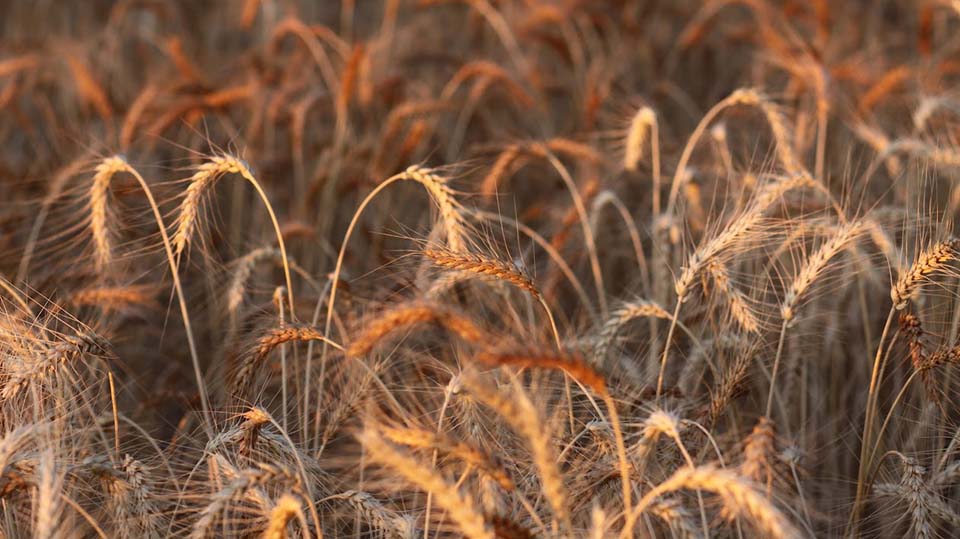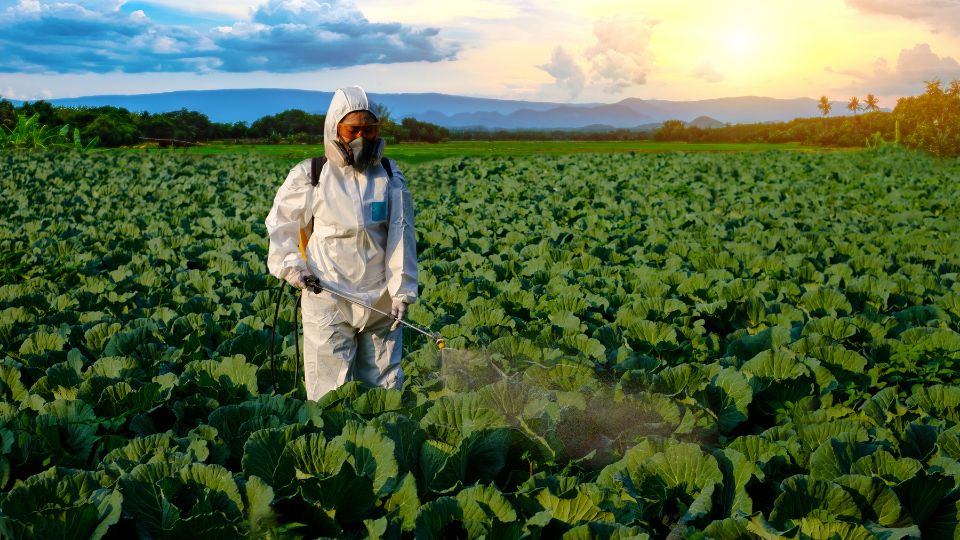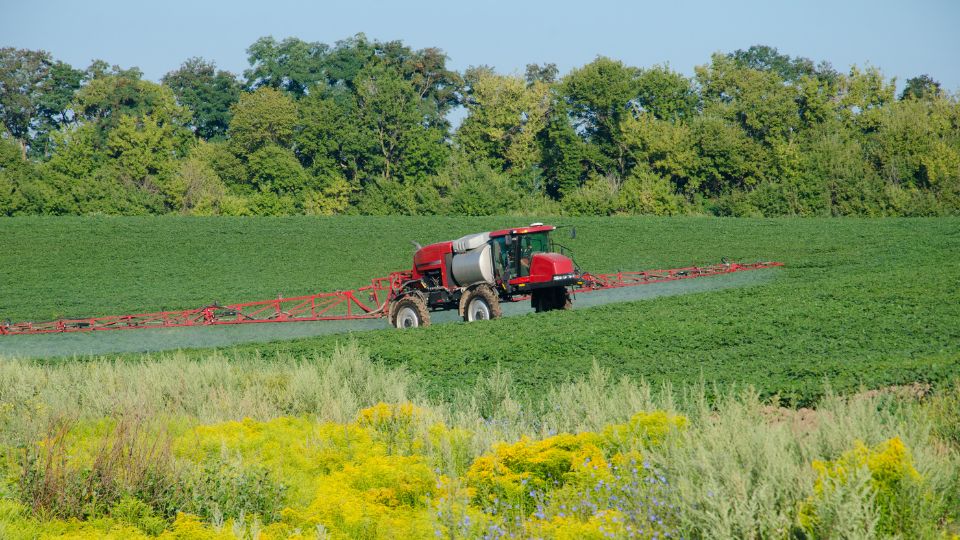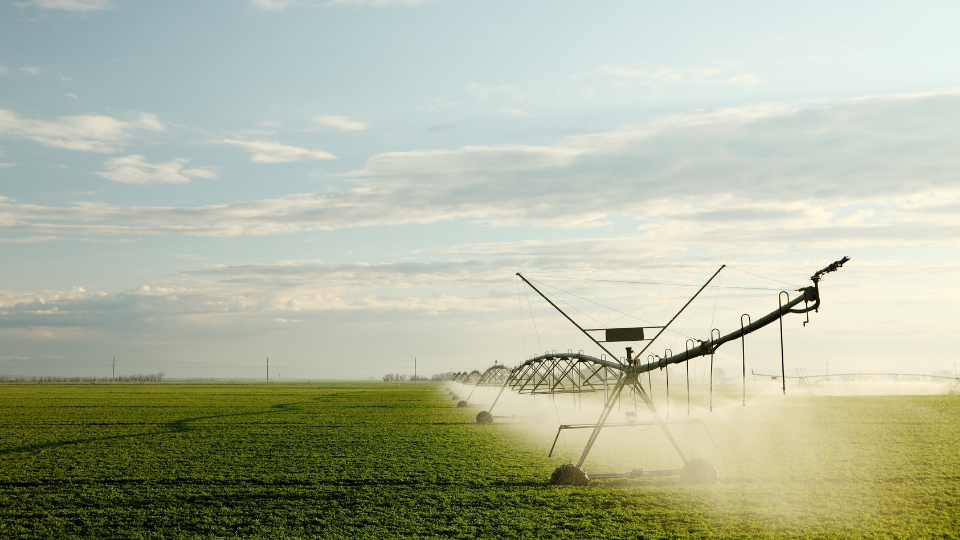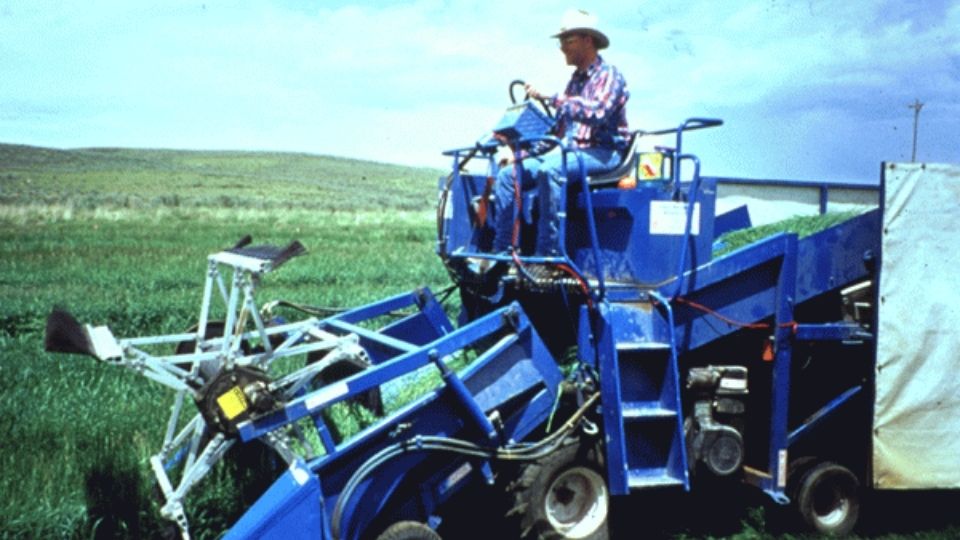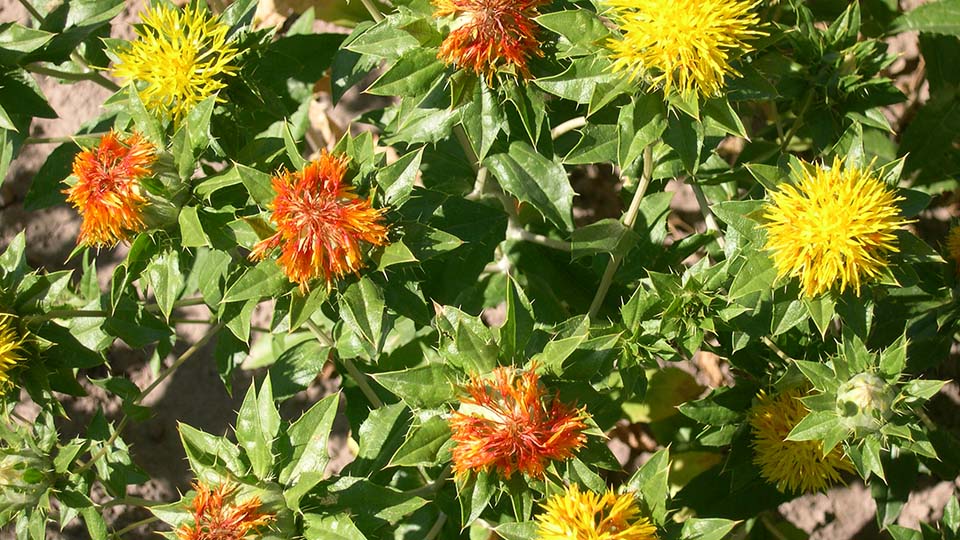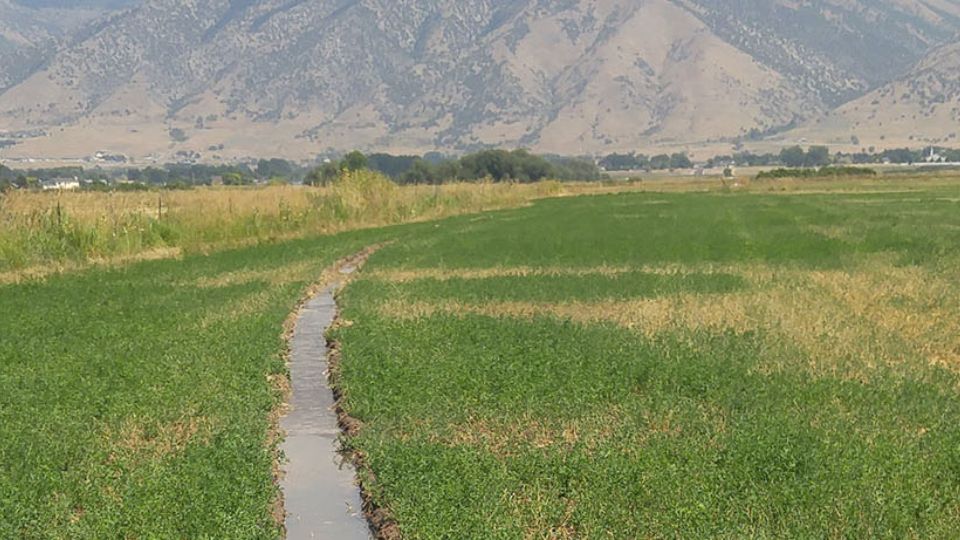Quinoa for Utah
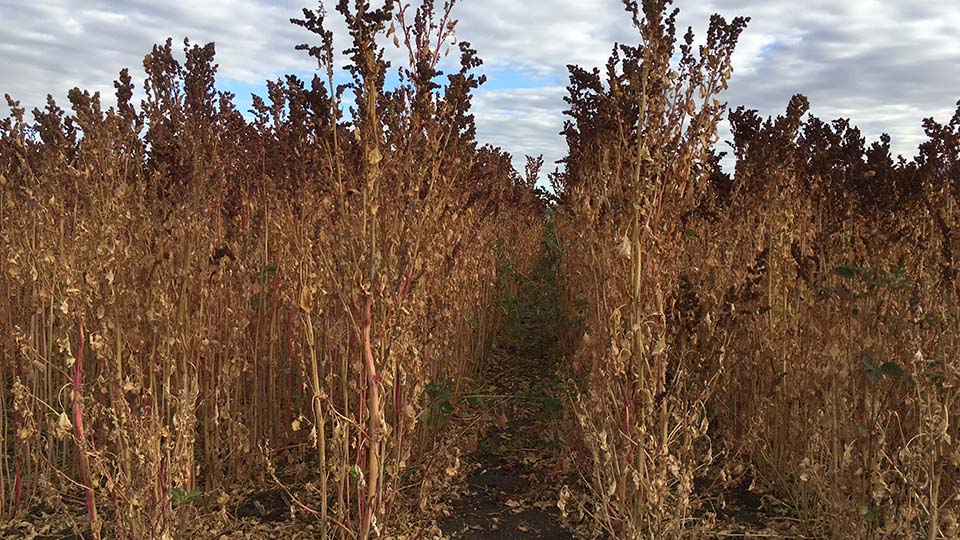
Quinoa (Chenopodium quinoa Willd.) (pronounced ˈkēn-ˌwä, or kē-ˈnō-ə) has gained popularity as a health food in recent years. High demand, coupled with insufficient United States (U.S.) grown supply, has resulted in high quinoa prices that have drawn the interest of growers in Utah and surrounding states in search of a new crop rotation option. Utah State University (USU) researchers have been working on quinoa since 2014. The purpose of this fact sheet is to date and to provide insight into some of the opportunities and limitations to quinoa production in Utah.
Plant Description
Quinoa is an annual crop with average height of 40 to 80 inches. Stems and leaves are typically green during spring and summer and can change to a yellow or red color at maturity. Quinoa produces flowers on a leafy cluster at the top of the stem, called a panicle. Seeds may also be colorful and are somewhat flat. The seeds are nutritious and contain more protein than wheat, corn or rice. Quinoa seeds also contain all nine essential amino acids and are gluten free. Quinoa traditionally is grown in South America near the Andes Mountains where it is a staple of subsistence farmers. The U.S. imports more quinoa than any other country worldwide and market prices have more than doubled in the last decade.
Why Quinoa?
Quinoa has been developed in diverse ecosystems throughout South America. Locally adapted varieties for the Pacific Northwestern climate have been developed by recent research through a breeding program headed by Washington State University, with cooperators at USU, Brigham Young University, and Oregon State University. However, varieties tested in Utah have often failed to produce seeds when peak summer temperatures coincide with flowering which usually begins mid-July. Despite this challenge, quinoa has two features that make it an attractive potential candidate for production in Utah.
Drought tolerance
Traditionally, quinoa has been grown with little or no irrigation. However, in arid regions such as Utah, irrigation aids in establishment and may increase yields. In irrigation trials at USU Research Farms in Logan and Kaysville, optimum irrigation for quinoa ranged from 9 to 16 inches per year, or about 1.7 inches per week during mid-summer. Applying irrigation above this level did not increase plant growth. Other research has shown that drought stress has the least impact on quinoa yield during vegetative stages early in the season. However, drought stress during flowering and seed fill can reduce yields.
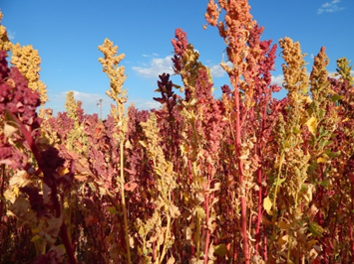
Salinity tolerance
Many agricultural soils in Utah have high salinity levels that can limit crop rotation options. Quinoa has been reported to be tolerant to salinity, even at levels equivalent to irrigation with water straight from the ocean. Field and laboratory trials at USU show great promise for growers with salt affected soils. In the greenhouse, quinoa irrigated with saline water showed no reduction in plant growth until water had a salinity of EC 20 dS/m, much higher than any local field conditions. In a field on the northern shores of the Great Salt Lake, USU seeded quinoa on a saline-sodic soil in a grower-cooperator field. While plants germinated and emerged in these harsh conditions, the stand was very irregular and insufficient for production. The poor stand may have been due to soil crusting, heavy weed competition, poor variety tolerance to salinity or a combination of all these obstacles. Early seeding and emergence before soil crusting could be an option to reclaim local salt affected fields. Alternatively, transplanting into a field may be an option but no research has been done in Utah to support this strategy.
Table 1. Varieties tested in Logan, Utah, that successfully produced seed in a field trial are listed. Variety trials were conducted on the Greenville Organic Research Farm, which has a Millville silt-loam soil. Fields were managed with overhead irrigation with approximately 1.5 inches of irrigation during the hottest months.
| Variety | Year | Seed origin |
|---|---|---|
| Black | 2015 | White Mountain Farm, CO |
| Blanca | 2015 | White Mountain Farm, CO |
| Cahuil | 2015 | White Mountain Farm, CO |
| Cherry Vanilla | 2014 & 015 | Frank Morton, Wild Garden Seeds, OR |
| CO 407 Dave | 2015 | Adaptive Seed |
| Isluga | 2015 | GRIN - E. Ballon (Talaya Center, New Mexico) |
| Kaslaea | 2015 | GRIN - E. Ballon (Talaya Center, New Mexico) |
| KU-2 | 2015 | BYU-WSU |
| NL-6 | 2015 | BYU-WSU |
| Puno | 2015 | Sven-Erik Jacobsen, Denmark |
| Temoku | 2015 | Bountiful Gardens, CA |
| Titicaca | 2015 | Sven-Erik Jacobsen, Denmark |
Variety Selection
Few commercially available varieties currently exist. Select a variety that has a day neutral photoperiod and can tolerate maximum summer temperatures found in your area, usually labeled in the varietal description from the seed producer. Several varieties have been developed by White Mountain Farms in Colorado and Wild Garden Seeds in Oregon which may be suitable for Utah farms. Varieties that have been grown and produced seed in Utah are listed in Table 1. However, these data are from preliminary field trials for our area and seed of these varieties may not be available in large quantities. Many quinoa varieties available commercially in the U.S. are suspected of being sensitive to temperatures above 95°F during flowering and seed fill. Research from both USU and Washington State University with locally available varieties suggests that pollen may become sterile or seed death may occur if temperatures are greater than 95°F. While irrigation can help alleviate stress at high temperatures, quinoa grown in Logan, Utah, with 1.5 to 2.0 inches of irrigation per week (fully-irrigated and over-irrigated conditions) still did not set seed during excessive heat in 2 of the past 4 years. New quinoa varieties developed in the future will likely be selected for improved heat tolerance.
Site Selection
Well-drained soil is essential for good quinoa growth. Quinoa yields decline with water-logged soils, which can also increase root disease. Quinoa can tolerate salinity greater than EC 20 dS/m in greenhouse settings, but high salinity in Utah is usually accompanied by high soil sodicity. These saline-sodic soils can be subject to excessive soil crusting which discourages emergence. Choose a site that can be worked early in the spring as delayed seeding will also result in yield loss.
Planting
Plant as soon as the soil can be worked in the spring, ideally close to the average last spring frost. Most available quinoa varieties can withstand light frosts after emergence. Delaying seeding results in yield loss and increases the effects of competition from weeds. Average time from planting to harvest is approximately 120 days, which could limit production in colder, high elevation areas of Utah with short growing seasons. However, in 2017, a quinoa variety trial planted at a high elevation site in Panguitch, Utah (elevation 6600 ft), successfully set seed, while the same trial in Logan (elevation 4500 ft) did not. The success of the Panguitch site was likely due to cooler summer temperatures than Logan in that particular year, which favored seed production in the varieties included in the 2017 trials.
Seeds are small and therefore should be planted shallow, approximately ¼” to ½” deep, to ensure even emergence. Row spacing recommendations vary from 6 to 20 inches. In trials at USU, row spacing of 18 inches and a seeding rate of 8 lbs/acre, allowed for inter-row weed management and reduced branching, which resulted in a single seed head able to be harvested mechanically. It can be difficult to find adequate quantities of seed for purchase and seed can be expensive. Bulk seed can be purchased in our region through White Mountain Farms in Colorado and Wild Garden Seed in Oregon. Seed can cost between $3 and $4 per pound or up to $74 per pound for organic quinoa seed.
Irrigation
Irrigating a new quinoa seeding is similar to establishing a new stand of alfalfa in Utah; short, frequent water applications that keep the soil wet and encourage germination and emergence. If planted early in the spring, timely rain may serve a similar purpose and eliminate the need for irrigation during establishment. Yield loss can be a problem if drought stress occurs during seed development late in the season. In irrigation experiments in Logan, Utah, at the Greenville Research Station, quinoa grew best at irrigation rates between 9 and 16.5 inches of water over the course of the season. Irrigating more than 16.5 inches per season did not increase yield. In the hottest parts of the summer, ideal irrigation should be approximately 1.5 inches of water per week. Over irrigating can stunt growth and increase the chance of disease.
Soil Fertility
Quinoa yield has been reported to increase with increasing nitrogen rates up to 180 lbs N/acre. Most universities recommend 150 lbs N/acre for quinoa production. Excess applied N results in little to no yield increase with additional N applied and can cause lodging or delay maturity.
Soil available phosphorous (P) is also a critical requirement for quinoa growth and yield. Research in other regions showed no response to increased P fertilization; however, Utah’s calcareous soils often have low levels of available soil P. From replicated field trials in Logan, Utah, organically grown quinoa was larger and had higher yield following a single application of composted steer manure. The compost supplied 60 lbs P/acre and increased the available soil P from 3.5 to 5 ppm. There is no published research on the impacts of potassium (K) fertility on quinoa growth at this time.
Pest Management
Weeds are one of the biggest problems with large scale quinoa production. Currently, there are no registered herbicides for use in quinoa in the U.S. While early seeded quinoa allows it to become established before many warm-season weeds, quinoa growth is slow while tap root development is occurring, about 7-14 days after emergence. Planting into a weed free seed bed is ideal, yet hand-weeding will likely still be required. Research in Europe suggests that inter-row cultivation can be effective in reducing weeds and achieving high yields.
Major insect pests reported in Washington State include Lygus bug and aphids. Little is known about specific management strategies to guard against insects in quinoa in the U.S. Weed populations of common lambsquarters (Chenopodium album), a close relative of quinoa, likely host insects that may also become pests of quinoa as acreage increases. Strategies such as crop rotation and weed management will likely be helpful in reducing insect pest pressure.
The most common disease of quinoa in Utah has been downy mildew, particularly in rainy years or when plants are seeded too closely and over-irrigated. Downy mildew on nearby common lambsquarters plants is suspected of serving as source of downy mildew in quinoa.
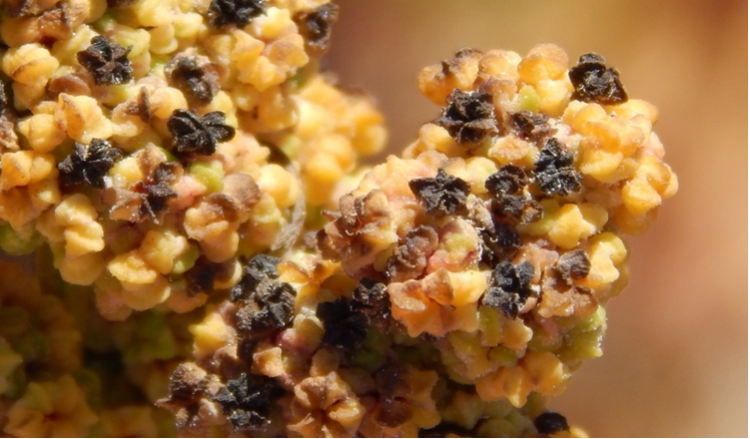
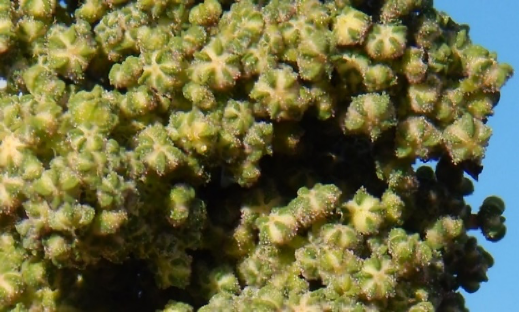
Harvest
Harvesting quinoa can be accomplished with a combine. If quinoa plants are established at a high population density, as described in this fact sheet, generally a single main panicle will be produced. Timing harvest can be tricky. Quinoa will dry down in the field, but late-season rains sometimes begin before quinoa is dry enough to harvest mechanically. Mature seeds will sprout in the panicle during rain events in the fall while waiting for the stalks to dry down enough for mechanical harvesting. Desiccation from herbicide may hasten the dry-down process, but this approach has not been studied and is not currently labeled. Another option could be to cut and windrow quinoa to aid dry-down and then to harvest with a combine fitted with a pick-up header. Sprout resistant varieties may help extend the harvest window. On small scale plots (i.e., gardens), quinoa can be harvested manually by cutting the stalk, drying the cut plants, and thrashing the seeds out once fully dry.
Yield and Quality
Researchers at Washington State University report variable yields of 90 to 1,100 lbs/acres with locally developed varieties, Oro de Valle and Cherry Vanilla. Yields in Colorado averaged around 1,200 lbs/acre with some fields producing up to 2,000 lbs/acre (varieties included CO 407, Black, Blanca and Cahuil). Local USU fields have produced much less, only around 300 lbs/acre, likely due to problems with heat tolerance in trial varieties. Reliable yield estimates need to be established based on weather, irrigation and nutrient inputs before widespread production can be feasible.
Protein N content is a significant measure of quinoa quality. Varieties have been reported to have between 8% and 22% protein. Variety selection plays a large role in N content, but increased N application as well as full irrigation are also suspected to increase N content.
Uses
The primary use for quinoa is as an alternate grain product. In other countries, quinoa has been used as a forage as it is palatable and grows well in cool seasons. Due to the seed cost, it is unlikely to be adopted as an alternate forage in our region. Quinoa seeds are covered in a bitter tasting coating called saponin, which must be reduced prior to consumption. Rinsing or light abrasion have been effective in removing saponin. Large scale seed processing plants are being developed in the western U.S., but do not currently exist in our area. Therefore, local Utah growers would face steep transportation costs for processing or must undertake processing and marketing themselves.
Market demand for quinoa grain is high and prices continue to increase. One cost analysis published in 2005 from research in Saskatchewan, Canada, cites a net income of $50/acre for conventional and $100/acre for organic quinoa. These values were based on a yield of 800 lbs/acre conventional and 400 lbs/acre organic. However, these calculations also use lower seed cost than discussed here and do not account for seed transportation and processing post-harvest. Potential exists for profitable quinoa production in Utah only after further on-farm research has been conducted to fully identify production costs and suitable varieties.
References
- El Hafid, R. Quinoa…The Next Cinderella Crop for Alberta? 2005. Alberta Agriculture, Food, and Rural Development. http://www1.agric.gov.ab.ca/$department/deptdocs.nsf/all/afu9961/$FILE/quinoa_final_report_june_05.pdf
- Jacobsen, S.-E., A. Mujica, and C. R. Jensen. 2003. “The Resistance of Quinoa ( Chenopodium Quinoa Willd.) to Adverse Abiotic Factors.” Food Reviews International 19 (1–2): 99–109. doi:10.1081/FRI-120018872.
- Jacobsen, Sven-Erik. 2003. “The Worldwide Potential for Quinoa ( Chenopodium Quinoa Willd.).” Food Reviews International 19 (1–2): 167–77. doi:10.1081/FRI-120018883.
- Jacobsen, Sven-Erik, Jørgen L. Christiansen, and Jesper Rasmussen. 2010. “Weed Harrowing and Inter-Row Hoeing in Organic Grown Quinoa (Chenopodium Quinoa Willd.).” Outlook on Agriculture 39 (3): 223–27. doi:10.5367/oa.2010.0001.
- Murphy, Kevin S., and Janet Matanguihan, eds. 2015. Quinoa: Improvement and Sustainable Production. John Wiley & Sons.
- Peterson, Adam, and Kevin Murphy. 2015. “Tolerance of Lowland Quinoa Cultivars to Sodium Chloride and Sodium Sulfate Salinity.” Crop Science 55 (1): 331. doi:10.2135/cropsci2014.04.0271.
- Walters, Hannah, Lynne Carpenter-Boggs, Kefaylew Desta, Lin Yan, Janet Matanguihan, and Kevin Murphy. 2016. “Effect of Irrigation, Intercrop, and Cultivar on Agronomic and Nutritional Characteristics of Quinoa.” Agroecology and Sustainable Food Systems 40 (8): 783–803. doi:10.1080/21683565.2016.1177805.
- Wu, Geyang. 2015a. “Nutritional Properties of Quinoa.” In Quinoa: Improvement and Sustainable Production, 193–205. Wiley & Sons.
Published December 2017
Utah State University Extension
Peer-reviewed fact sheet
Authors
Kristine Buckland, Earl Creech, Jennifer Reeve, Grant Cardon, and Mike Pace
Related Research





